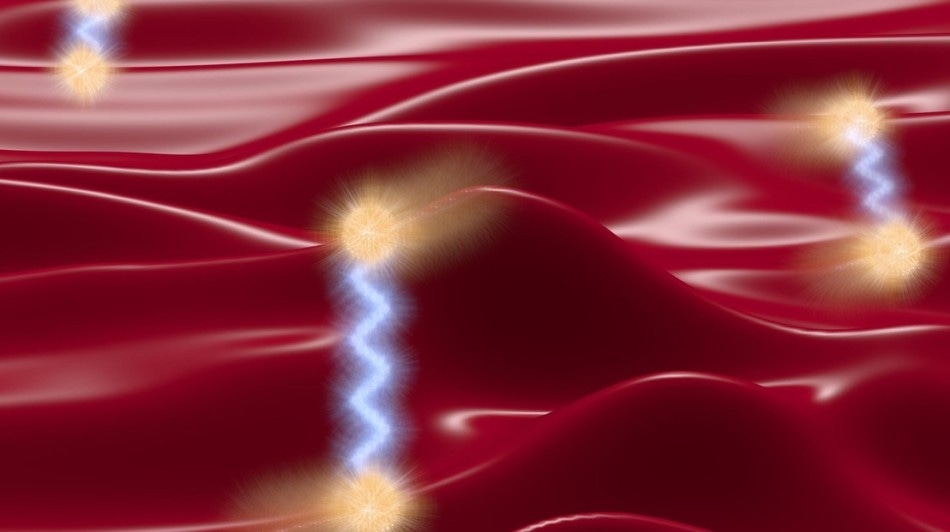May 28 2019
Thermoelectric materials particularly have immense potential for use in energy applications since they produce electricity from waste heat, such as that created by industrial processes, by truck and car engines, or just by the sun. Decreasing the thermal conductivity of these materials by a factor of three, for instance, would totally transform current waste-heat recovery, and also all refrigeration and air-cooling technologies.
 Heat is the energy due to vibrations of atoms. The ridges represent the quantum vibrational energy levels of CsPbBr3, a promising thermoelectric material. Heat conduction originates from both diffusion of vibrational excitations (blurred spheres, following the energy level) and quantum tunneling (jump between different energy levels, represented by blue waves). (© Michele Simoncelli)
Heat is the energy due to vibrations of atoms. The ridges represent the quantum vibrational energy levels of CsPbBr3, a promising thermoelectric material. Heat conduction originates from both diffusion of vibrational excitations (blurred spheres, following the energy level) and quantum tunneling (jump between different energy levels, represented by blue waves). (© Michele Simoncelli)
A unique theory for all insulating materials
In the paper “Unified Theory of Thermal Transport in Crystals and Glasses,” published in Nature Physics, Michele Simoncelli, a PhD student at EPFL’s Theory and Simulation of Materials (THEOS) Laboratory – along with Nicola Marzari, a professor at EPFL’s School of Engineering and head of THEOS and of the MARVEL NCCR, and Francesco Mauri, a professor at the University of Rome–Sapienza – present an innovative theory that at last decodes the central, atomistic origin of heat conduction. Until now, various formulations had to be used based on the systems examined (for example, ordered materials, such as a silicon chip, or disordered, such as in a glass), and there was no united picture covering all probable cases.
This has currently been made possible by drawing straight from the quantum mechanics of dissipative systems a transport equation that encompasses equal footing diffusion, hopping, and tunneling of heat.
Waste heat recovery
This essential understanding will allow researchers and engineers to accurately forecast the thermal conductivity of any insulating material (in metals, the heat is conveyed by the electrons, and that is well understood) – this is very important for thermoelectrics (that is, materials that can change heat into electricity), since these have both crystal- and glass-like properties, and are much required for waste-heat recovery, or for refrigeration without greenhouse gases (and if refrigeration sounds boring, it is worth keeping in mind that Albert Einstein spent numerous years attempting to invent a new type of refrigerator).
So as to build such next-generation technology, however, researchers first have to understand how and to what degree materials conduct heat.
Up to now, two different equations have been used for calculating thermal properties: one describes perfectly crystalline materials – that is, materials with highly ordered atomic structures – and the other one completely amorphous materials like glass, whose atoms do not follow an ordered pattern.
Michele Simoncelli, PhD Student, Theory and Simulation of Materials (THEOS) Laboratory, EPFL
These equations happened to work well in those particular instances. “But between these two extremes lie a plethora of interesting cases, and neither equation worked – this is really where our contribution makes a profound difference”